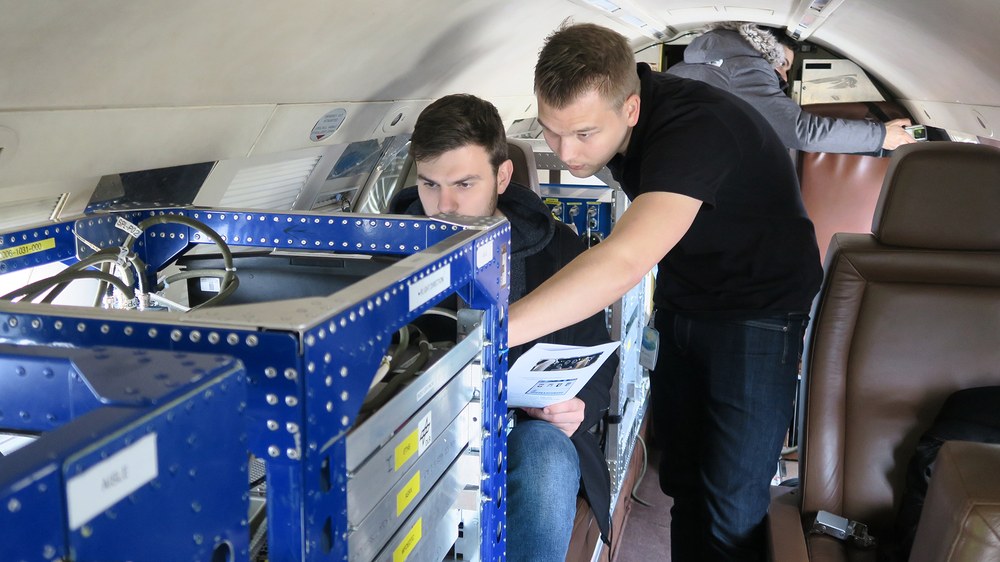LDACS - Standardization
The DLR Institute of Communications and Navigation has played a leading role in LDACS development since the beginning and currently heads the LDACS standardization group in ICAO.
LDACS stands for L-band Digital Aeronautical Communications System. It is the upcoming standard for digital, terrestrial aeronautical radio and thus an important data link technology within the future communications infrastructure for aviation.
Standardization
Within the framework of EUROCAE, two important standardization documents are being produced that contain detailed information on the equipment implementation of LDACS. These documents are the Minimum Aviation System Performance Standards (MASPS) and the Minimum Operational Performance Standards (MOPS). Both standardization documents assist equipment developers, manufacturers, service providers, and users in the implementation and deployment of LDACS. Furthermore, MASPS and MOPS regulate equipment requirements and characteristics as well as uniform test regulations.
In parallel to the EUROCAE activities, the standardization of LDACS is underway within ICAO. Since December 2016, the LDACS standardization group "Project Team Terrestrial Data Link" of the Communications Panel has been developing the so-called SARPs (Standards and Recommended Practices). The LDACS SARPs will be included in Annex 10 to the Chicago Convention (Convention on International Civil Aviation) after completion of the ICAO standardization and will thus become globally binding rules for air traffic. In addition to the SARPs, ICAO also produces guidance material to inform and support the ICAO standardization process and clarifies ICAO's internal allocation of frequency bands.
April 17, 2023
Final document on IETF standardisation published
Another important step on the way to standardising LDACS has now been taken - standardisation within the IETF (Internet Engineering Task Force).
Over a period of four years, continuous updates to the document were presented at 10 IETF meetings and discussed in the IETF working group "Reliable and Available Wireless" (RAW). The final document was published in March 2023 as RFC 9372.
RFC 9372 provides an overview of the L-Band Digital Aeronautical Communications System (LDACS) architecture, which provides a secure, scalable and spectrum-efficient terrestrial data link for civil aviation. LDACS is a reliable, cellular broadband system with multiple applications and support for IPv6. It is part of a larger transition of air traffic control communications to IP-based communications. High reliability and availability of IP connectivity over LDACS as well as security are therefore of critical importance. The purpose of this document is to introduce LDACS to the IETF community, to raise awareness of related activities within and outside the IETF, and to solicit expertise in shaping the transition of aviation to IP.
The activities for the IETF standardisation of the "L-band Digital Aeronautical Communications System (LDACS)" were started on 5 November 2019 by Nils Mäurer (DLR), Thomas Gräupl (DLR) and Corinna Schmitt (RI CODE, UniBw M). Standardisation within the IETF is an important step for the global deployment of LDACS.
November 11, 2022
LDACS SARPs adopted by ICAO Communications Panel
The future digital aeronautical radio LDACS (L-band Digital Aeronautical Communications System) has reached an important milestone in ICAO standardization - the so-called SARPs (Standards and Recommended Practices) have been adopted together with the necessary supporting material by the Communications Panel of ICAO in the 6th meeting of the Data Communications Infrastructure Working Group (DCIWG/6). The next step is the review by the Air Navigation Commission, during which the standardization documents will be sent to all ICAO States for comments. Once the comments are resolved, the new technology for aeronautical radio will be included in Annex 10 of the Chicago Convention on International Civil Aviation, making it available to the aviation community.
March 9, 2022
EUROCAE standardization of LDACS started
The introduction of the future global airborne radio system LDACS (L-band Digital Aeronautical Communications System) has taken a decisive step forward. In January 2022, the Technical Advisory Committee (TAC) of EUROCAE approved the request of the LDACS standardization group "Project Team Terrestrial Data Link" of the Communications Panel of ICAO to prepare further standardization documents within the framework of EUROCAE. The corresponding "Call for Participation" of EUROCAE Working Group 82 (WG-82) "New Air-Ground Data Link Technologies" was published in early March 2022. The kick-off meeting is scheduled for April 12, 2022.
Within EUROCAE, two important standardization documents are being produced that contain detailed information about the equipment implementation of LDACS. These documents are the Minimum Aviation System Performance Standards (MASPS) and the Minimum Operational Performance Standards (MOPS). Both standardization documents assist equipment developers, manufacturers, service providers, and users in the implementation and deployment of LDACS. Furthermore, MASPS and MOPS regulate device requirements and characteristics as well as uniform test specifications.
In parallel to the EUROCAE activities, the standardization of LDACS is ongoing within ICAO. There, the so-called SARPs (Standards and Recommended Practices) have been developed since December 2016 in the LDACS standardization group "Project Team Terrestrial Data Link" of the Communications Panel. The LDACS SARPs will be included in Annex 10 to the Chicago Convention (Convention on International Civil Aviation) after completion of the ICAO standardization and will thus become globally binding rules for air traffic. In addition to the SARPs, ICAO is also producing guidance material to inform and support the ICAO standardization process and clarify ICAO's internal allocation of frequency bands.
Together with Eurocontrol, Frequentis AG and the University of Salzburg, DLR was the initiator of the future airborne radio LDACS and contributed significantly to its design and development from the beginning. Several projects within the framework of SESAR and the Aeronautics Research Program (LuFo) were applied for and successfully completed together with partners to further develop the technology maturity of LDACS. In 2016, the standardization of LDACS was initiated together with partners within ICAO. The LDACS standardization group "Project Team Terrestrial Data Link" established for this purpose is headed by DLR.



